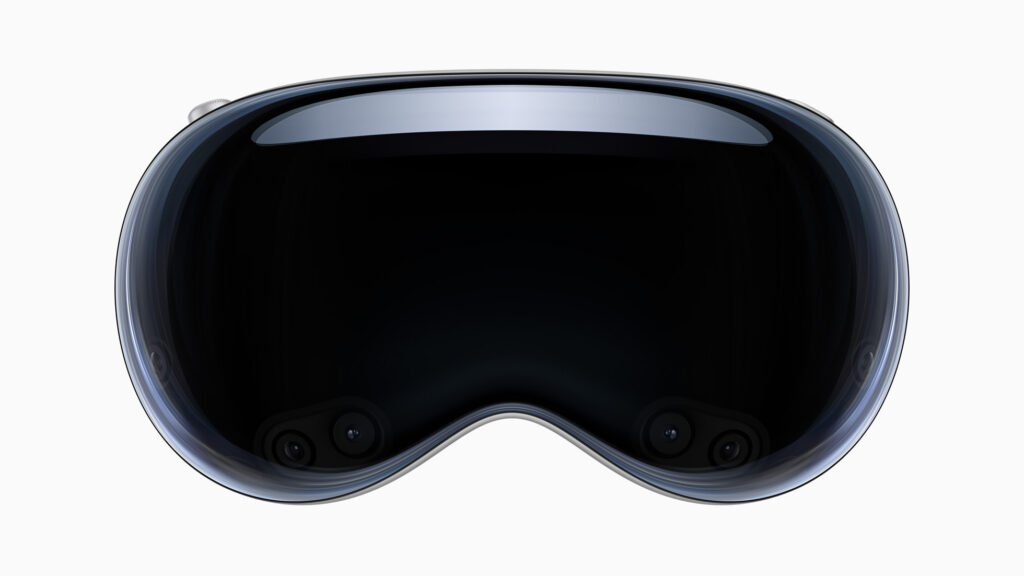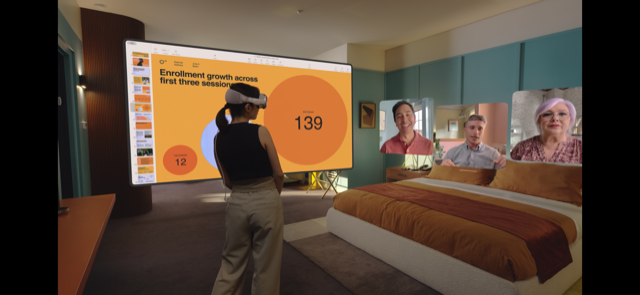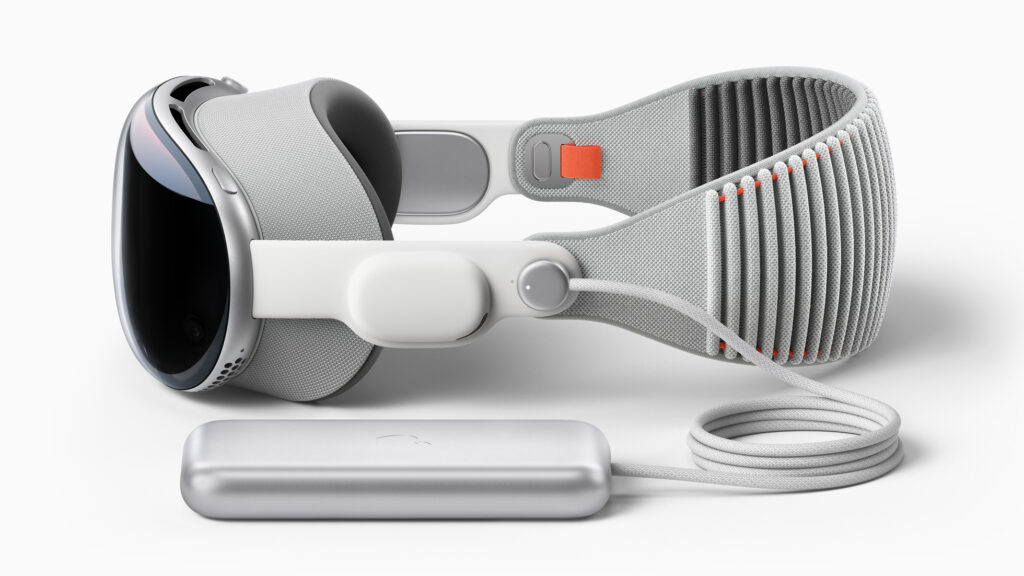Tim Cook presented it as the heir to the MacBook and iPhone, but above all, as the product that opens the third era in Apple’s history. There is a lot of marketing in the words of the Cupertino company’s CEO, not least because he, more than anyone else, perhaps realised that the premises accompanying the launch of the Vision Pro are not the best. Due to arrive on the US market on 2 February, the spatial computing device is the most eagerly awaited of the year, even by other manufacturers, who are hoping for Apple to revive the vaunted virtual reality market, which is currently restricted to a small niche.
Sales under expectations
Apple’s visor has begun its journey from the Chinese factories of Luxshare, the only company assembling the device, to arrive in Apple stores in the US. Here, Cupertino employees will offer those interested in purchasing a 25-minute demo to explain how to use and what to do with the Vision Pro. Apparently, sales do not seem to be going great, as analyst Ming-Chi Kuo, usually well-informed about Apple’s moves, estimates that between 160,000 and 180,000 units were placed in the first weekend of pre-orders.
Good numbers in an absolute sense, less so if we consider the strength of Apple, which has about 1.2 billion active users worldwide, with a good chunk residing in the only market where the mixed reality visor will be available.
Leaving doubts about the device’s reception are the expected delivery times for those who reserved Vision Pro after the initial sell-out, which remained unchanged between five and seven weeks. A detail that indicates a declining demand compared to the long wait during pre-orders for new iPhones.





Beyond the limited units produced by Apple, the price of $3,499 is also holding back the VR visor. Cost that rises to $3,699 for the 512GB version and $3,899 for the model with 1TB storage space (to reserve, one must scan one’s face with iPhone or iPad via FaceID). And that’s not all, as more money will have to be spent on each individual accessory: $99 or $149 to add the Zeiss optical inserts needed by those with visual defects who can thus avoid wearing glasses inside the visor. You need $199 for the travel case and just as much for extra batteries and extra light seals, but there is also the Belkin battery holder to clip the device to your trousers or wear it as a shoulder strap.
While many fans of the brand and those curious about the visor await the launch of a second, cheaper model, it is crucial for Apple to expand demand for the Vision Pro in preparation for its launch in other international markets, which is expected to take place mid-year. That’s why the company insists on highlighting the peculiarities of the visionOS operating system, which users can operate via eye and hand gestures or with convenient voice commands via Siri, reiterating that the VR visor will count on more than a million apps from iOS and iPadOS. Here, however, there is a big problem to be solved.
A VR device without 3 top apps
The Vision Pro’s launch campaign suffered a setback precisely because of the lack of a number of apps that are as popular as they are among users. When it debuts, the visor will not have Netflix, Spotify, or YouTube. This does not mean that users will have to give up these services, but rather that instead of using the convenient and fast app, they will have to switch to the respective sites.





A longer step worsens the quality because the website is not optimised for the device and will offer a worse graphic quality than the dedicated app. There will be Disney+, Amazon Prime Video, and Paramount+, but not the three mentioned above, which, for different reasons, are not interested in the success of Vision Pro.
To be able to count on the addition of 160,000-180,000 users is a pittance compared to the investment required to develop an app version for a given device, which is justified if that app is a source of new subscribers. For the same reason, after all, Netflix blocked the Meta Quest app despite pressure from Zuckerberg. A bitter pill to swallow for Apple, which is accustomed to making its voice heard when it comes to apps and developers for iPhone and iPad, but not for a new device, mostly intended for a small circle of fans.
Apple’s fierce opposition to all the companies that have challenged its rules (such as Spotify and Epic Games) also counts in the duel, particularly the 30% commission the company takes for purchases in its digital store. Cupertino explains that this is “a reasonable way to take into account the substantial value Apple provides to developers”, a solution that works for those who make content for the iPhone but not for Vision Pro. At least not for now.



